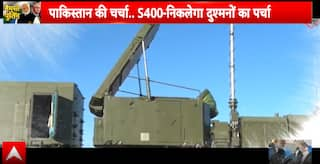Japanese Firm ispace's Spacecraft Fails To Make World's First Private Lunar Landing: All You Need To Know
Communication was expected to remain intact even after touchdown, but since the link is lost, ispace believes that apparently, the lunar lander could not touch down on the lunar surface.

Japanese lunar exploration company ispace failed to make the world's first lunar landing on Tuesday, April 25, 2023. The firm was preparing to land the HAKUTO-R Mission 1 lunar lander, called the Series 1 lander, on the Moon. The Series 1 lander was scheduled to land on the lunar surface at around 10:10 pm IST on April 25, but failed to do so.
The communication between the lander and the ispace Mission Control Centre in Nihonbashi, Tokyo, was lost as of 8:00 am JST (4:30 am IST) on April 26. Communication was expected to remain intact even after touchdown, but since the link is lost, ispace believes that apparently, the lander could not touch down on the lunar surface.
The lunar lander was launched atop a SpaceX Falcon 9 rocket, as part of the HAKUTO-R Mission 1. The spacecraft took off from Cape Canaveral, Florida, in December 2022.
What happened as the lander approached the lunar surface?
The Atlas Crater, located in the northeastern quadrant of the Moon, was chosen as the primary landing site for the HAKUTO-R Mission 1 Lander.
In a statement, ispace said that the ninth milestone of the HAKUTO R Mission 1, called 'Success 9', is not achievable. The completion of lunar landing, which would have verified key landing abilities for future missions, was 'Success 9'.
As the Series 1 lander carried out its final approach to the lunar surface, the lander was in a vertical position, the HAKUTO-R Mission Control Centre confirmed. However, after the scheduled landing time, the Mission Control Centre did not receive any data indicating a touchdown.
What made ispace conclude that the lander made a hard lunar landing?
The communication loss between the lander and the Mission Control Centre happened after the estimated remaining propellant reached its lower threshold and the descent speed rapidly increased. Based on this, ispace engineers determined that there is a high probability that the Series 1 lander eventually made a hard landing on the Moon's surface.
ALSO READ | SpaceX Gets Nod From US Space Force To Add Its Fifth Launch Site In US: Report
What is next for ispace?
The engineers are currently working on a detailed analysis of the telemetry data acquired until the end of the landing sequence, to find the root cause of the situation.
The HAKUTO-R Mission 1 has achieved 'Success 1' through 'Success 8', the first eight milestones of the mission.
The first milestone, called 'Success 1', was the completion of launch preparations, the second milestone, or 'Success 2', was the completion of launch and deployment, the third milestone, or 'Success 3', was the establishment of a steady operation state, or the establishment of a communication link between the lander and the mission control centre, the fourth milestone, or 'Success 4', was the completion of the first orbital control manoeuvre, which set the lander on a course toward the Moon, the fifth milestone, or 'Success 5', was the completion of stable deep-space flight operations for one month, the sixth milestone, or 'Success 6', was the completion of all planned deep space orbital control manoeuvres before lunar orbit insertion, by utilising gravity assist effects, the seventh milestone, or 'Success 7', was the completion of the first lunar orbit insertion manoeuvre as a result of which the lander reached a lunar orbit, and the eighth milestone, or 'Success 8', was the completion of all orbit control manoeuvres in lunar orbit before the landing sequence.
On April 14, 2023, the lander completed 'Success 8'.
According to ispace, the Mission Control Centre was able to acquire valuable data while attempting the completion of lunar landing, and important details from the beginning to nearly the end of the landing sequence. This will enable ispace to achieve a future successful lunar landing mission.
The firm believes that the HAKUTO-R Mission 1 is a great leap forward to future lunar exploration and an important milestone to advance space development by the private sector.
Using the data and knowledge acquired during the mission through 'Success 8', and the landing sequence, ispace aims to improve the technological maturity of Mission 2 in 2024 and Mission 3 in 2025.






































